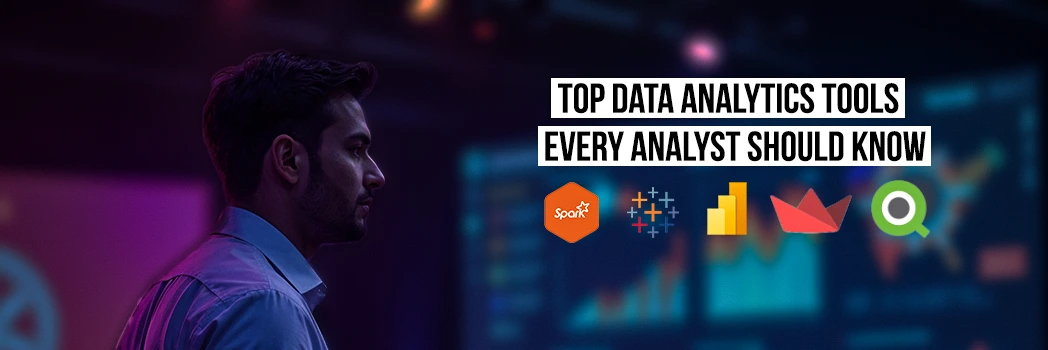Data analysts must stay updated on the latest tools and methodologies. Tools are the cornerstone of their success.
Proficiency in essential data analytics tools will help data analysts land lucrative jobs and become successful. They will use a variety of tools, including complex software, analytical suites, spreadsheets, workspaces, and machine-learning models. Data analytical tools are evolving and changing relevant to the user demands.
Best Data Analyst Tools
If you are interested in becoming a data professional, you have to master the following data tools.
1. Power BI
Power BI is a popular analytical tool offered by Microsoft. These tools provide users with real-time updates and insights through powerful dashboards. It helps data analysts to track insights from different sources and work with querying data. Using Power BI, users can easily integrate with other Microsoft products.
Power BI is considered to be one of the easy-to-use data analysis tools for beginners. It has a user-friendly interface that allows users to navigate through and make use of it effectively.
2. SAS
SAS is also known as the Statistical Analysis System. It is an important data analytics software for analysts. This SAS tool is powered by ML, deep learning, and AI. It is one of the essential tools for data analysis, allowing users to perform advanced analytics and work with predictive data models.
It is one of the advanced data analytics tools that is widely used by senior data professionals. In particular, this tool is aggressively implemented in sectors like finance and healthcare.
3. Tableau
Tableau is an important data analytics platform for analysts, allowing them to build appealing visual representations. Data analysts are required to boil down complex datasets into easy-to-understand visualizations.
It is mostly used by data and marketing professionals who have the requirements to produce visually appealing data and reports.
4. QlikView
QlikView is one of the essential data analytics tools that converts raw data into usable data. Data analysts will use this tool to analyze datasets from various sources and to identify relationships between them.
It is used to track the real-time performance of operations in different industries like manufacturing and e-commerce. Also, using QlikView, users can do in-depth analysis on large datasets.
5. Stata
It is a powerful data analytics software for analysts. Using Stata, data analysts can build strong statistical models. Stata has an easy, user-friendly interface that makes it one of the best data analysis tools for beginners. However, it is a powerful tool used by economists, data analysts, and scientists.
6. Holistics
It is one of the best data analyst tools for beginners and non-technical users. This data analytics tool helps users prepare reports. This tool can be used easily as it has drag-and-drop features.
7. Apache Spark
Spark is an essential tool if you need to work with big data. It is known for its versatility and easy-to-access features. Spark can analyze huge piles of data at a faster speed than other conventional tools. Using Apache Spark has helped many data analysts and scientists save time and enhance their productivity.
8. Streamlit
Streamlit is not a tool but an open-source library for Python that allows users to build web applications suitable for data projects. This tool is popular because it is open-source and has features that are not complex to use. Data analysts can use Streamlit to build dashboards and interactive reports. Using Streamlit, users can create a demo of ML models, like simulations.
AI Influence In Data Analytics Tools
Data analytics has evolved a lot with the arrival of artificial intelligence. It has led to easy integration of advanced algorithms with conventional analytical tools. Data scientists and analysts can automate multiple repetitive tasks with the help of artificial intelligence.
Recently, data analysts have started to leverage artificial intelligence to work efficiently.
Nowadays, training institutes have launched data analytics courses including AI modules. Artificial intelligence and machine learning have helped data professionals build enhanced predictive models. Also, by leveraging it, they can find hidden insights from unstructured data.
Conclusion
Currently, the world revolves around data, and companies are producing huge piles of data. This has resulted in the increased demand for data analytics tools. As data professionals, it is essential to familiarize themselves with the aforementioned essential data analytics tools.
Other than these tools, they have to be proficient in spreadsheets like Excel and programming languages. These are basic, but they have to be strong at it to make use of data tools effectively. The arrival of new technologies like AI and ML has opened the doors for the betterment of the existing data tools.
